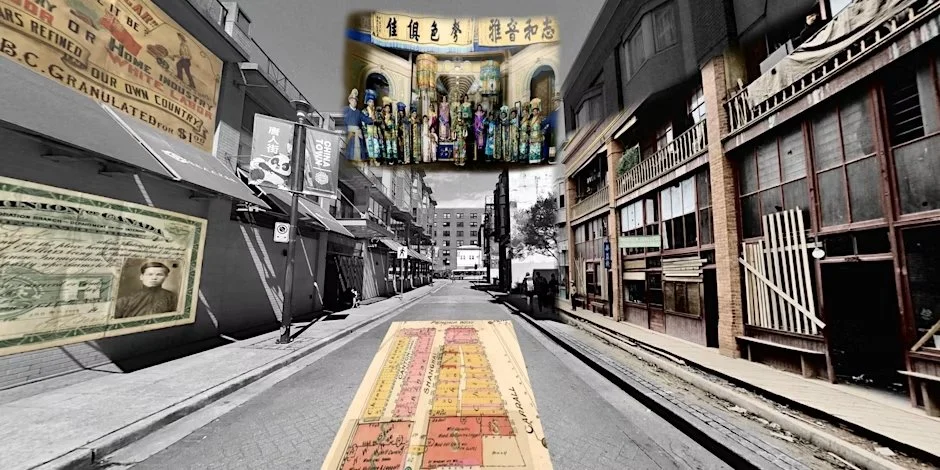Imagine Van Gogh takes an epic look at a giant of Post-Impressionism
French artistic director Annabelle Mauger brings lifelong experience with big screens to touring exhibit
Photo by Laurence Labat
Imagine Van Gogh shows at the Vancouver Convention Centre starting March 19
TO SEE VINCENT Van Gogh’s mesmerizing The Starry Night in person, you would first have to travel to New York City, then battle hordes of grinning selfie-takers at MoMA.
The slightly off-kilter Bedroom at Arles? Wait your turn in the endless line of tourists at Paris’s Musée d’Orsay—and then quickly lean in as close as the ever-present security guards might allow.
It would be worth the trouble. Van Gogh’s iconic works vibrate with emotion and explode with colour even when you can’t get your nose right up to the glass.
But seeing the details aren’t a problem at Imagine Van Gogh. In what would have blown the mind of an artist who died alone, impoverished and unappreciated, in a tiny attic room, the wildly popular exhibit digitally projects more than 200 of the Dutch Post-Impressionist’s works across towering screens in high-resolution.
The magnification makes his fascinating and fevered paintings speak even more clearly to the masses. The exhibit, which is coming this week to the Vancouver Convention Centre, allows viewers of all ages and art backgrounds to bathe in the painter’s urgent brushwork and heady imagery (with strict social distancing in place). No art-history degree required; in fact, organizers report kids are some of its biggest fans.
“The only thing you need is your heart and your brain,” says artistic director Annabelle Mauger, who created the immersive travelling exhibit with Julien Baron.
Speaking from her home in Lyon, Mauger says that projection is just a tool to show Van Gogh’s art in a new, deeper way—providing some insight into the conflicting forces of tension and tenderness within him.
“When you look at a Van Gogh painting and you look at the details, he was painting with a kind of violence. The brush strokes are very straight. But if you get more distance you see the lines are very curved,” Mauger says, speaking from the living room where she and her two children have just started 6 pm lockdown due to curfews in the historic southern city. “And that was really important, to show that part of his personality: he has both of those personal touches. This was someone who felt everything, and I think when you’re in the exhibition you can see it both ways.”
The show draws from Van Gogh’s most prolific, inspired, and yet tormented time. It spans 1888 to 1890, spent in nearby Arles, the serene institution near Saint-Rémy-de-Provence, and the village of Auvers-sur-Oise outside of Paris—his last few years of life. His most famous imagery spreads out across multiple, angled screens and the floor between your feet: the dancing gold and orange of his sunflowers, the swaying hayfields with the flying crows, and the rolling blue swirls and radiant orbs of the starry nights.
It’s one of the few big events that can proceed amid COVID-19 restrictions: Imagine Van Gogh, which has travelled the world, spreads across 25,000 square feet of dark, indoor space, allowing for social distancing. (Ticket holders prebook entry times.)
When you enter the exhibit, you first go into a room to read text about Van Gogh’s life and work. Then you go into a much larger space where you’re surrounded by multiple projections of his images, to the sound of music by Prokofiev, Saint-Saëns, Schubert, and Satie.
The experience is radically different than going to a museum, Mauger emphasizes. You can move around the works to explore them at all angles. The projections allow the viewer to almost physically enter the painting, to see the movement created by the brushstrokes within it, without ever literally animating the images (as creators have done in another show that toured to Toronto last summer).
The paintings that most awed the creative director when she first saw them blown up are also the ones she says most dazzle visitors to Imagine Van Gogh: the two “Starry Nights”.
In both paintings, Van Gogh was expressing a beauty and magic that he found in the night—something that he wrote to his beloved brother Theo about, calling it in one letter “much more alive and richly coloured than the day”. He painted the first, known as Starry Night on the Rhône, in 1888 from the banks of the titular river in Arles, with the big dipper clearly visible. The second, more famous and fevered one (The Starry Night), was created in 1889 while he was living at the asylum in Saint-Rémy-de-Provence, after his breakdown and the mutilation of his ear. The view was captured from the window in his room at the facility and turns the morning star Venus into a whirling nebula.
In one of the exhibit’s most moving moments, Mauger shifts from one of those paintings (we’ll leave it as a surprise which one) to a real photograph she stayed up all night to take one summer’s eve in Provence, painstakingly waiting for the same star formation that radiates from the artist’s sky.
The Sunflowers brings a blast of colour to Imagine Van Gogh. Photo by Laurence Labat
Giant projections in a world of small screens
Mauger traces her passion for creating immersive worlds out of giant multimedia projections right back to her childhood, and her grandparents’ house in Normandy.
As a child, she was surrounded by larger-than-life screens.
“For the first 20 years of my life I was going on holiday to my grandparents’ house, and they owned many cinemas—even one inside the house,” Mauger recalls. “I remember having a pocket full of my father and his brothers’ dinky toys, going down the stairs to the cinema like a little mouse, and I would go behind the rolling screen—the last place I could go without anybody bothering me.
“What it means for me is I’ve never been afraid of the screen,” she adds. “Today everybody knows the screen as an iPhone or a laptop. For me it’s bizarre: as we go through time, the screens are getting smaller. But this is good for me, because when you are in front of a giant screen now, you forget where you are—what I call Image Totale.”
Mauger was thrust into the world of large-scale projections again, when she married into the family who runs the famed attraction Cathédrale d’Images, in picturesque Les Baux-de-Provence. Located in the hills near Avignon, and carved out of limestone quarries, it allows visitors to walk through giant projections of art set to music. She moved from Paris with her young family to start managing the facility in the late-2000s, just as technology was shifting from old-school slides to digital. Mauger pushed to be able to design her first show there, first impressing her new family by creating a large-screen show for her wedding at the Cathédrale d’Images.
Her first exhibit was devoted to the legendary Post-Impressionist who had painted the fields and towns only a short drive away—and it grew into Imagine Van Gogh.
The artistic director aimed to show more than just the Dutch painter’s most famous works as she collected the highest-resolution images possible. Lesser-known pieces show the artist’s direct influence of Japonisme, in gnarled blossoms and other landscapes. (Van Gogh had a fascination with imported Japanese Ukiyo-e woodblock prints that were all the rage in Europe in the late 19th century.) And there are startling moments when you can look the artist straight into his intense eyes, in closeups taken from his self-portraits.
The response from audiences from around the world has been rapturous. Imagine Van Gogh has been so successful that Mauger has already created another one with Baron: Imagine Picasso, which she’ll bring to Montreal in June.
Reflecting on the popularity, she observes that the multiple projections create a kind of transcendent, wide-reaching experience similar to what you might get in the grand stone halls of Cathédrale d’Images in Les Baux.
“In history, before there were museums, the museums were cathedrals and churches--those were the only place you could find art,” she says. “That was the only way for everybody to discover these paintings. It was the only way to make everybody understand the image. We did the same.”
See here for more information and tickets as they are released.















